Search Results for Laboratory Techniques
To browse more topics, click a topic below or try our advanced search.
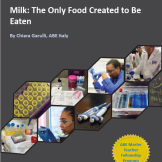 Resource (Teaching Materials, Classroom-based)
Resource (Teaching Materials, Classroom-based)Milk: The Only Food Created to Be Eaten

In this inquiry-based science project, developed by ABE Italy Master Teacher Fellow Chiara Garulli, students gain a greater understanding of enzyme activities, proteins, molecular structure,… Read more
Class Sessions10–20Appropriate AgesUpper Secondary
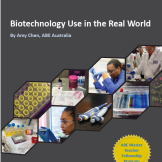 Resource (Teaching Materials, Classroom-based)
Resource (Teaching Materials, Classroom-based)Biotechnology Use in the Real World

In this project, developed by ABE Australia Master Teacher Fellow Amy Chen, students become familiar with the many ways that biotechnology is in the world around us, and how it impacts our lives, and… Read more
Class Sessions18
Appropriate AgesUpper Secondary
 Resource (Teaching Materials, Lab-based)
Resource (Teaching Materials, Lab-based)Dog Drool Investigation Extension Lab

In this extension lab, students use gel electrophoresis and a series of prepared dyes to determine which dog ate their homework! Read more
Appropriate AgesLower Secondary, Upper Secondary, Introductory
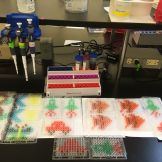 Resource (Teaching Materials, Classroom-based, Lab-based)
Resource (Teaching Materials, Classroom-based, Lab-based)Pipetting Art

This activity allows students to practice pipetting in order to create designs. Students can follow the enclosed templates, or they can create their own designs to form words or images using… Read more
Appropriate AgesLower Secondary, Upper Secondary, Introductory
 Resource (Professional Learning/Support, Event, Teaching Materials, Lab-based)
Resource (Professional Learning/Support, Event, Teaching Materials, Lab-based)ABE Express

ABE Express is a condensed version of the full ABE curriculum, usually conducted over 1–2 days. These workshops are conducted in Science Centre Singapore. There are 3 options—ABE Express Beginner,… Read more
Appropriate AgesLower Secondary, Upper Secondary, Introductory, Advanced
 Resource (Teaching Materials, Classroom-based, Lab-based)
Resource (Teaching Materials, Classroom-based, Lab-based)PTC Lab (Dutch)

De Reizende DNA-labs en de ABE leskistDe Reizende DNA-labs slaan een brug tussen biologie en scheikunde op school en de nieuwste ontwikkelingen rond genomics, door leerlingen zelf aan de slag te… Read more
Appropriate AgesUpper Secondary, Introductory, Advanced
 Resource (Teaching Materials, Classroom-based, Lab-based)
Resource (Teaching Materials, Classroom-based, Lab-based)Kitten Paternity

This lab is a different take on classic gel electrophoresis. Students run a gel and analyze it in order to determine which cat is most likely to be the father of a group of kittens. Students may… Read more
Appropriate AgesLower Secondary, Upper Secondary, Introductory
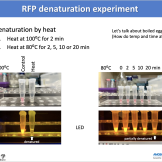 Resource (Teaching Materials, Lab-based)
Resource (Teaching Materials, Lab-based)RFP Denaturation Activity

This activity allows students to explore how denaturation of RFP affects the protein. Read more
Appropriate AgesUpper Secondary, Introductory, Advanced
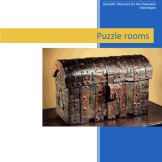 Resource (Teaching Materials, Classroom-based)
Resource (Teaching Materials, Classroom-based)Biotech Escape Room Puzzles

These "escape room" puzzles allow students to work through a variety of interesting biotechnology scenarios. Read more
Appropriate AgesLower Secondary, Upper Secondary, Introductory
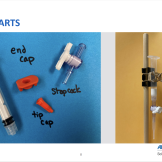 Resource (Promotional Materials, Teaching Materials, Lab-based)
Resource (Promotional Materials, Teaching Materials, Lab-based)Column Making Workshop

This workshop, hosted by ABE San Francisco, allowed participants to create their own chromatography columns in order to elute rfp. Read more
Appropriate AgesLower Secondary, Upper Secondary, Introductory
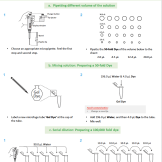 Resource (Teaching Materials, Lab-based)
Resource (Teaching Materials, Lab-based)Foundations of Biotech Lab Flowcharts

These flowcharts, created by ABE Hong Kong, help guide students through the Foundations of Biotech labs using a series of useful visuals. Read more
Appropriate AgesLower Secondary, Upper Secondary, Introductory, Advanced
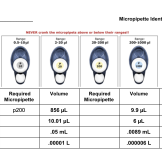 Resource (Teaching Materials, Lab-based)
Resource (Teaching Materials, Lab-based)Micropipetting Practice Stations

This activity allows students to practice their pipetting skills at a series of different "stations". Read more
Appropriate AgesLower Secondary, Upper Secondary, Introductory, Advanced
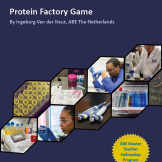 Resource (Teaching Materials, Classroom-based, Web-based)
Resource (Teaching Materials, Classroom-based, Web-based)Protein Factory Game

This board game teaches students the fundamentals of transcription and translation. These materials were developed by ABE Master Teacher Fellow Indeborg Van der Neut of ABE The Netherlands as part… Read more
Class Sessions2+
Appropriate AgesLower Secondary, Upper Secondary
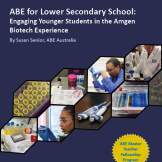 Resource (Teaching Materials, Lab-based)
Resource (Teaching Materials, Lab-based)ABE for Lower Secondary School

This lesson is a series of lower-secondary school activities modeled after the ABE Foundations of Biotech lab series. In it, younger students can explore some of the tools and techniques of… Read more
Class Sessions6–10Appropriate AgesLower Secondary
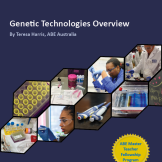 Resource (Teaching Materials, Web-based)
Resource (Teaching Materials, Web-based)Genetic Technologies Overview

This lesson provides an introduction to eight current topics in biotechnology, including polymerase chain reaction (PCR), DNA "fingerprinting," and genetic sequencing. The scientific principles… Read more
Class Sessions11Appropriate AgesUpper Secondary
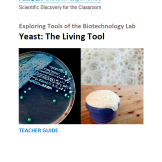 Resource (Teaching Materials, Classroom-based, Lab-based)
Resource (Teaching Materials, Classroom-based, Lab-based)Exploring Tools of the Biotechnology Lab: Yeast – The Living Tool

Because the cellular processes of yeast are relatively easy to manipulate, it has been extensively used as a model organism in biotechnology research. Like human cells, yeast cells have a nucleus… Read more
Class Sessions4Appropriate AgesLower Secondary
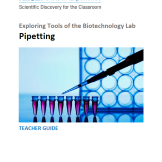 Resource (Teaching Materials, Classroom-based, Lab-based)
Resource (Teaching Materials, Classroom-based, Lab-based)Exploring Tools of the Biotechnology Lab: Pipetting

The biotechnology industry has changed tremendously with the introduction of new tools and technologies. Many of these advances have changed the way scientists work, allowing them to accomplish tasks… Read more
Class Sessions4
Appropriate AgesLower Secondary
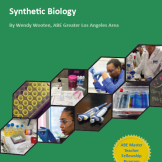 Resource (Teaching Materials, Classroom-based)
Resource (Teaching Materials, Classroom-based)Synthetic Biology

In this lesson, students learn research and learn the underlying concepts of Synthetic Biology, learn how to apply engineering design process to create systems of devices composed of parts of DNA,… Read more
Class Sessions5–15Appropriate AgesUpper Secondary
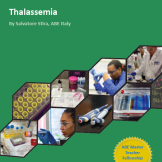 Resource (Teaching Materials, Classroom-based)
Resource (Teaching Materials, Classroom-based)Thalassemia

In this lesson, students deepen their understanding of the relationship between scientific research in modern biology and medicine by studying the genetic basis of thalassemia, a form of hereditary… Read more
Class Sessions15Appropriate AgesUpper Secondary
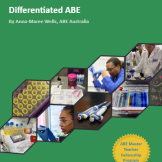 Resource (Teaching Materials, Classroom-based)
Resource (Teaching Materials, Classroom-based)Differentiated ABE

This differentiated learning program enables senior students studying Investigating Science to access the ABE program to deepen their understanding of how the discovery of the structure of DNA has… Read more
Class Sessions5–10Appropriate AgesUpper Secondary
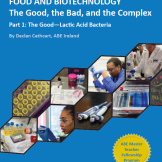 Resource (Teaching Materials, Lab-based)
Resource (Teaching Materials, Lab-based)The Good, the Bad, and the Complex Part 1: The Good—Lactic Acid Bacteria

Students investigate some of the claims companies make about probiotics and learn several key techniques in biotechnology (including aseptic technique, spreading, pipetting, sterilization using a… Read more
Class Sessions5+Appropriate AgesUpper Secondary
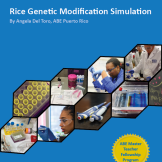 Resource (Teaching Materials, Lab-based, Web-based)
Resource (Teaching Materials, Lab-based, Web-based)Rice Genetic Modification Simulation

Rice is a staple food product in many countries across the globe, and it can be modified in numerous useful ways (e.g., to be resistant to diseases, to include additional nutrients as in golden rice… Read more
Appropriate AgesUpper Secondary
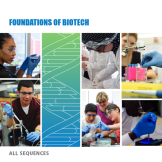 Resource (Teaching Materials, Lab-based)
Resource (Teaching Materials, Lab-based)Foundations of Biotech

The Foundations of Biotech labs were created to introduce students to biotech techniques and concepts; in these labs, students explore recombinant DNA technology.Sequences of these labs were designed… Read more
Class Sessions4–20
Appropriate AgesUpper Secondary, Advanced
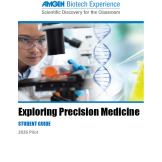 Resource (Lab-based)
Resource (Lab-based)Exploring Precision Medicine

Precision medicine identifies treatment and prevention strategies for a person based on their genetic, environmental, and lifestyle factors. In the Exploring Precision Medicine curriculum module,… Read more
Class Sessions11–15
Appropriate AgesUpper Secondary, Advanced
 Resource (Teaching Materials, Lab-based)
Resource (Teaching Materials, Lab-based)Dog Drool Investigation Extension Lab

In this extension lab, students use gel electrophoresis and a series of prepared dyes to determine which dog ate their homework! Read more
Appropriate AgesLower Secondary, Upper Secondary, Introductory
 Resource (Teaching Materials, Classroom-based, Lab-based)
Resource (Teaching Materials, Classroom-based, Lab-based)Pipetting Art

This activity allows students to practice pipetting in order to create designs. Students can follow the enclosed templates, or they can create their own designs to form words or images using… Read more
Appropriate AgesLower Secondary, Upper Secondary, Introductory
 Resource (Lab-based)
Resource (Lab-based)ABE Foundations of Biotech Lab Guides (Japanese)

ABE Japan Foundations of Biotech protocols, student guide, and slide deck for each lab. ABE Japan Foundations of Biotechのプロトコール、学生ガイド、各ラボのパワーポイント。 Read more
Appropriate AgesUpper Secondary, Introductory, Advanced
 Resource (Professional Learning/Support, Event, Teaching Materials, Lab-based)
Resource (Professional Learning/Support, Event, Teaching Materials, Lab-based)ABE Express

ABE Express is a condensed version of the full ABE curriculum, usually conducted over 1–2 days. These workshops are conducted in Science Centre Singapore. There are 3 options—ABE Express Beginner,… Read more
Appropriate AgesLower Secondary, Upper Secondary, Introductory, Advanced
 Resource (Teaching Materials, Classroom-based, Lab-based)
Resource (Teaching Materials, Classroom-based, Lab-based)PTC Lab (Dutch)

De Reizende DNA-labs en de ABE leskistDe Reizende DNA-labs slaan een brug tussen biologie en scheikunde op school en de nieuwste ontwikkelingen rond genomics, door leerlingen zelf aan de slag te… Read more
Appropriate AgesUpper Secondary, Introductory, Advanced
 Resource (Teaching Materials, Classroom-based, Lab-based)
Resource (Teaching Materials, Classroom-based, Lab-based)Kitten Paternity

This lab is a different take on classic gel electrophoresis. Students run a gel and analyze it in order to determine which cat is most likely to be the father of a group of kittens. Students may… Read more
Appropriate AgesLower Secondary, Upper Secondary, Introductory
 Resource (Teaching Materials, Lab-based)
Resource (Teaching Materials, Lab-based)RFP Denaturation Activity

This activity allows students to explore how denaturation of RFP affects the protein. Read more
Appropriate AgesUpper Secondary, Introductory, Advanced
 Resource (Promotional Materials, Teaching Materials, Lab-based)
Resource (Promotional Materials, Teaching Materials, Lab-based)Column Making Workshop

This workshop, hosted by ABE San Francisco, allowed participants to create their own chromatography columns in order to elute rfp. Read more
Appropriate AgesLower Secondary, Upper Secondary, Introductory
 Resource (Teaching Materials, Lab-based)
Resource (Teaching Materials, Lab-based)Foundations of Biotech Lab Flowcharts

These flowcharts, created by ABE Hong Kong, help guide students through the Foundations of Biotech labs using a series of useful visuals. Read more
Appropriate AgesLower Secondary, Upper Secondary, Introductory, Advanced
 Resource (Teaching Materials, Lab-based)
Resource (Teaching Materials, Lab-based)Micropipetting Practice Stations

This activity allows students to practice their pipetting skills at a series of different "stations". Read more
Appropriate AgesLower Secondary, Upper Secondary, Introductory, Advanced
 Resource (Teaching Materials, Lab-based)
Resource (Teaching Materials, Lab-based)ABE for Lower Secondary School

This lesson is a series of lower-secondary school activities modeled after the ABE Foundations of Biotech lab series. In it, younger students can explore some of the tools and techniques of… Read more
Class Sessions6–10Appropriate AgesLower Secondary
 Resource (Teaching Materials, Classroom-based, Lab-based)
Resource (Teaching Materials, Classroom-based, Lab-based)Exploring Tools of the Biotechnology Lab: Yeast – The Living Tool

Because the cellular processes of yeast are relatively easy to manipulate, it has been extensively used as a model organism in biotechnology research. Like human cells, yeast cells have a nucleus… Read more
Class Sessions4Appropriate AgesLower Secondary
 Resource (Teaching Materials, Classroom-based, Lab-based)
Resource (Teaching Materials, Classroom-based, Lab-based)Exploring Tools of the Biotechnology Lab: Pipetting

The biotechnology industry has changed tremendously with the introduction of new tools and technologies. Many of these advances have changed the way scientists work, allowing them to accomplish tasks… Read more
Class Sessions4
Appropriate AgesLower Secondary
 Resource (Teaching Materials, Lab-based)
Resource (Teaching Materials, Lab-based)The Good, the Bad, and the Complex Part 1: The Good—Lactic Acid Bacteria

Students investigate some of the claims companies make about probiotics and learn several key techniques in biotechnology (including aseptic technique, spreading, pipetting, sterilization using a… Read more
Class Sessions5+Appropriate AgesUpper Secondary
 Resource (Teaching Materials, Lab-based, Web-based)
Resource (Teaching Materials, Lab-based, Web-based)Rice Genetic Modification Simulation

Rice is a staple food product in many countries across the globe, and it can be modified in numerous useful ways (e.g., to be resistant to diseases, to include additional nutrients as in golden rice… Read more
Appropriate AgesUpper Secondary
 Resource (Teaching Materials, Lab-based)
Resource (Teaching Materials, Lab-based)Foundations of Biotech

The Foundations of Biotech labs were created to introduce students to biotech techniques and concepts; in these labs, students explore recombinant DNA technology.Sequences of these labs were designed… Read more
Class Sessions4–20
Appropriate AgesUpper Secondary, Advanced
 Resource (Teaching Materials, Classroom-based)
Resource (Teaching Materials, Classroom-based)Milk: The Only Food Created to Be Eaten

In this inquiry-based science project, developed by ABE Italy Master Teacher Fellow Chiara Garulli, students gain a greater understanding of enzyme activities, proteins, molecular structure,… Read more
Class Sessions10–20Appropriate AgesUpper Secondary
 Resource (Teaching Materials, Classroom-based)
Resource (Teaching Materials, Classroom-based)Biotechnology Use in the Real World

In this project, developed by ABE Australia Master Teacher Fellow Amy Chen, students become familiar with the many ways that biotechnology is in the world around us, and how it impacts our lives, and… Read more
Class Sessions18
Appropriate AgesUpper Secondary
 Resource (Teaching Materials, Classroom-based, Lab-based)
Resource (Teaching Materials, Classroom-based, Lab-based)Pipetting Art

This activity allows students to practice pipetting in order to create designs. Students can follow the enclosed templates, or they can create their own designs to form words or images using… Read more
Appropriate AgesLower Secondary, Upper Secondary, Introductory
 Resource (Teaching Materials, Classroom-based, Lab-based)
Resource (Teaching Materials, Classroom-based, Lab-based)PTC Lab (Dutch)

De Reizende DNA-labs en de ABE leskistDe Reizende DNA-labs slaan een brug tussen biologie en scheikunde op school en de nieuwste ontwikkelingen rond genomics, door leerlingen zelf aan de slag te… Read more
Appropriate AgesUpper Secondary, Introductory, Advanced
 Resource (Teaching Materials, Classroom-based, Lab-based)
Resource (Teaching Materials, Classroom-based, Lab-based)Kitten Paternity

This lab is a different take on classic gel electrophoresis. Students run a gel and analyze it in order to determine which cat is most likely to be the father of a group of kittens. Students may… Read more
Appropriate AgesLower Secondary, Upper Secondary, Introductory
 Resource (Teaching Materials, Classroom-based)
Resource (Teaching Materials, Classroom-based)Biotech Escape Room Puzzles

These "escape room" puzzles allow students to work through a variety of interesting biotechnology scenarios. Read more
Appropriate AgesLower Secondary, Upper Secondary, Introductory
 Resource (Teaching Materials, Classroom-based, Web-based)
Resource (Teaching Materials, Classroom-based, Web-based)Protein Factory Game

This board game teaches students the fundamentals of transcription and translation. These materials were developed by ABE Master Teacher Fellow Indeborg Van der Neut of ABE The Netherlands as part… Read more
Class Sessions2+
Appropriate AgesLower Secondary, Upper Secondary
 Resource (Teaching Materials, Classroom-based, Lab-based)
Resource (Teaching Materials, Classroom-based, Lab-based)Exploring Tools of the Biotechnology Lab: Yeast – The Living Tool

Because the cellular processes of yeast are relatively easy to manipulate, it has been extensively used as a model organism in biotechnology research. Like human cells, yeast cells have a nucleus… Read more
Class Sessions4Appropriate AgesLower Secondary
 Resource (Teaching Materials, Classroom-based, Lab-based)
Resource (Teaching Materials, Classroom-based, Lab-based)Exploring Tools of the Biotechnology Lab: Pipetting

The biotechnology industry has changed tremendously with the introduction of new tools and technologies. Many of these advances have changed the way scientists work, allowing them to accomplish tasks… Read more
Class Sessions4
Appropriate AgesLower Secondary
 Resource (Teaching Materials, Classroom-based)
Resource (Teaching Materials, Classroom-based)Synthetic Biology

In this lesson, students learn research and learn the underlying concepts of Synthetic Biology, learn how to apply engineering design process to create systems of devices composed of parts of DNA,… Read more
Class Sessions5–15Appropriate AgesUpper Secondary